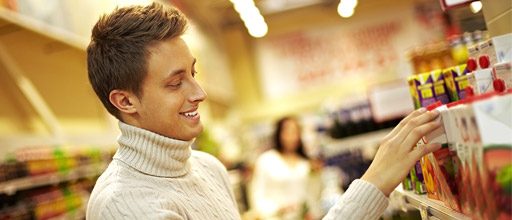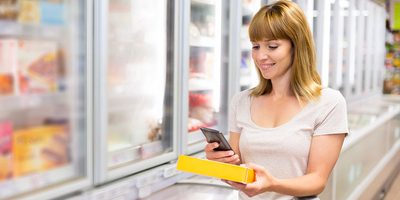
NZ app to fight two of the nation’s biggest killers
A revolutionary smartphone app launched will empower New Zealand shoppers to make healthier food choices - reducing their risk of dying early from two of the nation’s biggest killers, heart attack and stroke.
In three easy steps, New Zealand consumers can reduce excessively high levels of fat, and share shopping lists with friends via social media. salt and sugar in their families’ diets.
Originally developed in Australia by The George Institute for Global Health and tailored for New Zealand shoppers by The University of Auckland researchers, FoodSwitch allows users to scan the barcode of packaged foods using their Smartphone camera and receive immediate, easy to understand nutritional advice and see healthier choices.
The release of FoodSwitch New Zealand is the result of several years of research by pre-eminent food and health policy experts from The George Institute and The University of Auckland, and launched thanks to a new partnership with Bupa, one of New Zealand’s leading healthcare organisations.
Importantly, the app displays healthier choices based on the nutritional value of more than 8,000 packaged food products found in New Zealand supermarkets. New Zealand shoppers will be encouraged to help increase the number of products by sending photos of packaged foods not in the database.
FoodSwitch prompts users to take three photos of the product and ’s packaging researchers will use these photos to add the missing product to the FoodSwitch app database.
FoodSwitch’s three step approach combines the latest technology with cutting edge research. New Zealanders can now scan barcodes, see what’s in a food, and switch to a healthier choice in an instant,” says Dr Helen Eyles, researcher and nutritionist at the National Institute for Health Innovation (NIHI) at The University of Auckland.
Dr Eyles says heart disease, stroke, diabetes and other diseases, largely caused by poor diets, are the biggest killers in New Zealand.
“Choosing a healthier diet has to be made easier because good eating habits are one of the best and most cost-effective ways to prevent disease,” says Dr Eyles.
Research shows that people like traffic light labels and can use them to make healthier food choices.
‘’We’re delighted to have been able to get FoodSwitch up and going in New Zealand’’ says Professor Neal of The George Institute and of The University of Sydney.
‘’Diet-related ill health is a global problem and we have grand ambitions for helping people around the world to make better food choices. New Zealand is a first key step in a multinational roll out for the app,’’ says Professor Neal.
‘’We expect FoodSwitch to do well in New Zealand because of the same problems we have in Australia – confusing food labelling designed primarily for sales and marketing, not for health. This is a key first step in redressing that balance and we hope consumers will jump on it,’’ he said.
Bupa’s Managing Director, Graine Moss, says “We are delighted and excited to be bringing FoodSwitch to New Zealand as it supports Bupa’s purpose of helping people live longer, healthier, happier lives by improving New Zealand families’ diets with a simple, practical tool.”
The original Australia version of FoodSwitch was recently recognised as one of the world’s top 100 innovative initiatives at the international 2013 Sustaina launch event. FoodSwitch was selected from entries spanning more than 79 countries and acknowledged for its efforts to help Australians make healthier food choices and reduce their risk of heart attack and stroke.
FoodSwitch is available on iOS and Android smartphones, and can be downloaded for free on the New Zealand Apple iTunes and Google Play stores, or via the app store on their device.



